 Katie Morley
Katie Morley
Dec 16, 2023
 Katie Morley
Katie Morley
Dec 16, 2023
As eCommerce marketing and technology stacks continue to grow more complex, customer data platforms (CDPs) have become essential for many online stores.
CDPs bridge the gap between different systems that store customer data, breaking down silos and enabling crucial data flows. They also act as unified customer databases and a single source of truth for key information, including customer interactions with your site and mobile app, purchase histories, email engagement, and more.
However, the best eCommerce CDPs can do much more than data unification, identity resolution, and segmentation. They’re equipped with tools for handling very specific eCommerce use cases, like:
In this guide, you’re going to learn everything you need to know about eCommerce CDPs, including what they are, how they work, and what sets them apart from regular CDPs.
We’ll also show you how Insider — our industry-leading CDP and personalization platform — can aggregate your customer data, segment your audience, and improve key metrics, like revenue, AOV, and CAC via personalization and cross-channel marketing.
Insider can help you connect data across channels, predict future behavior with AI, and automate cross-channel journeys from a single platform with an incredibly fast time to value. Try our platform or book a free demo with our team.
What is an eCommerce CDP?
Use cases and benefits of using a CDP for eCommerce brands
Features to look for when choosing an eCommerce CDP
Insider: The best eCommerce CDP and cross-channel marketing solution
Aggregate your data and drive more revenue with Insider’s eCommerce CDP
Similar to regular CDPs, eCommerce CDPs are solutions designed to take customer data scattered across disparate sources and bring it together in one place.
For eCommerce, these sources are often content management systems (CMSs), analytics solutions, loyalty platforms, point-of-sale (PoS) devices, channel-specific marketing tools, and customer service platforms.
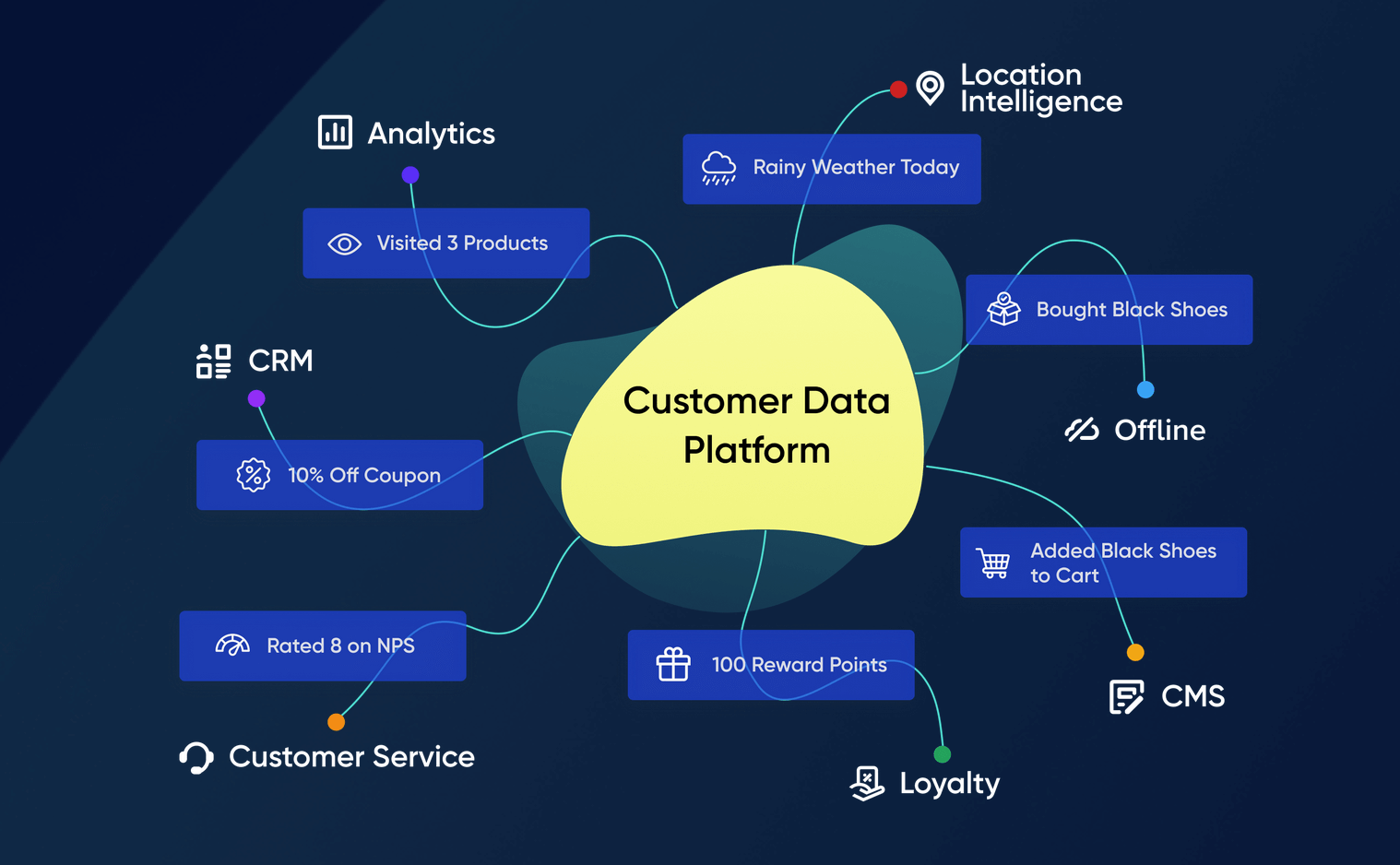
eCommerce CDPs in particular:
It’s also worth noting that not all eCommerce CDPs are created equal. We can organize them into three distinct categories:
For example, Insider is a Campaign CDP that offers data aggregation, segmentation, and identity resolution, alongside 12+ native channels, advanced personalization, and journey orchestration — all under the same umbrella.
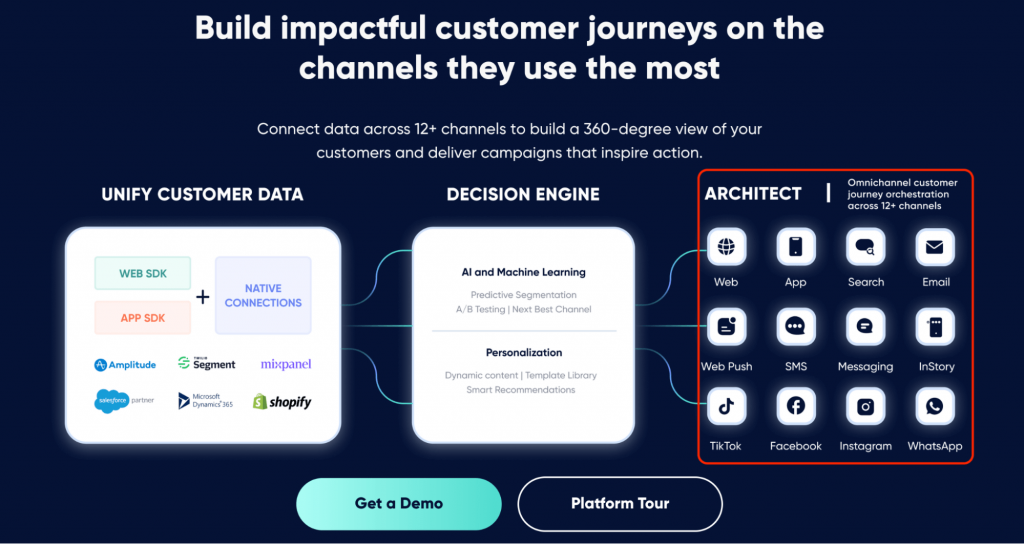
eCommerce CDPs enable you to aggregate your data in one place and create detailed, 360-degree views of all customers via omnichannel identity resolution. They also have segmentation capabilities that can help you target the right audiences with each individual message and campaign.
Additionally, getting a clear understanding of your customers’ journeys helps you lay the groundwork for:
Lastly, having all customer information in one platform makes it easier to keep track of where it’s stored and how it’s used, which is essential for data management and complying with data privacy regulations like GDPR or CCPA.
eCommerce CDPs have a lot in common with regular CDPs: They aggregate data, create detailed customer profiles, and help you segment your audience. These features are a given, so when comparing eCommerce CDPs, look for ones that also offer:
As we said earlier, Insider is our industry-leading CDP that’s ranked as the best and easiest-to-use CDP by users on G2.
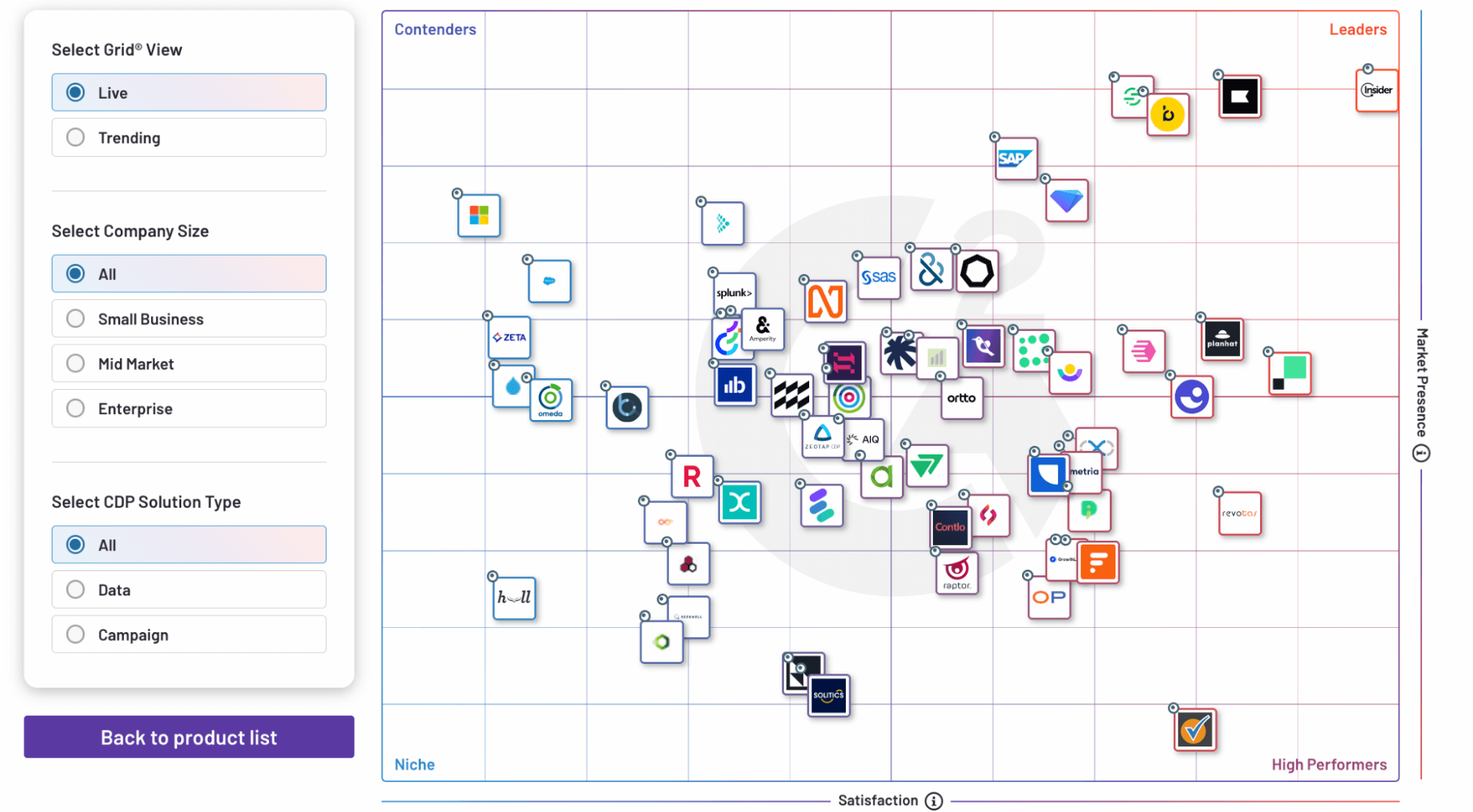
As a cross-channel marketing solution, Insider brings together the most extensive set of personalization capabilities for websites and mobile apps, as well as for channels like email, SMS, web push, and WhatsApp.
As a result, our platform is also ranked as the top option across other categories, including:
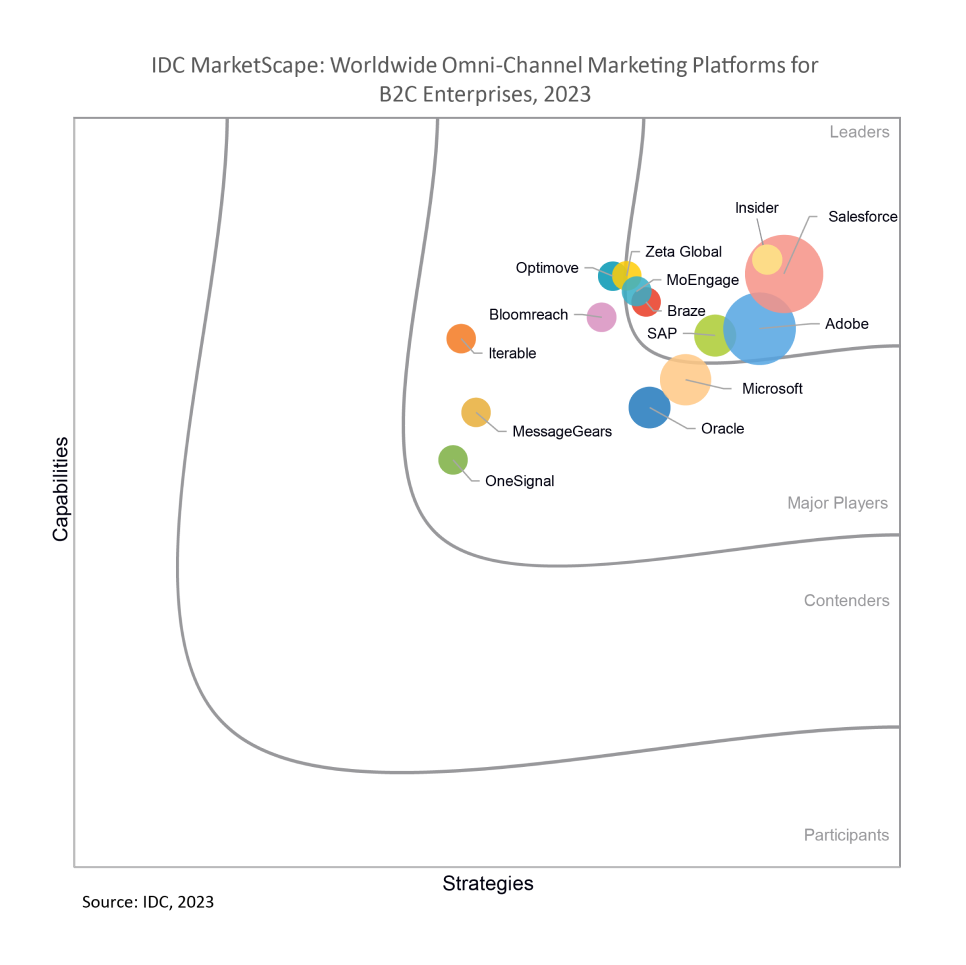
Put simply, you can use Insider to unify your eCommerce customer data, get a clear view of each shopper’s experience, and activate your data across all touchpoints. Below, we’ll explore how this process works and how it contributes to key eCommerce metrics, like conversions, revenue, CAC, AOV, and more.
Insider’s Integration Hub enables you to connect to and gather information from 100+ popular data sources across categories like eCommerce, marketing automation, ads, analytics, and many more.
Some of our most popular integrations include:
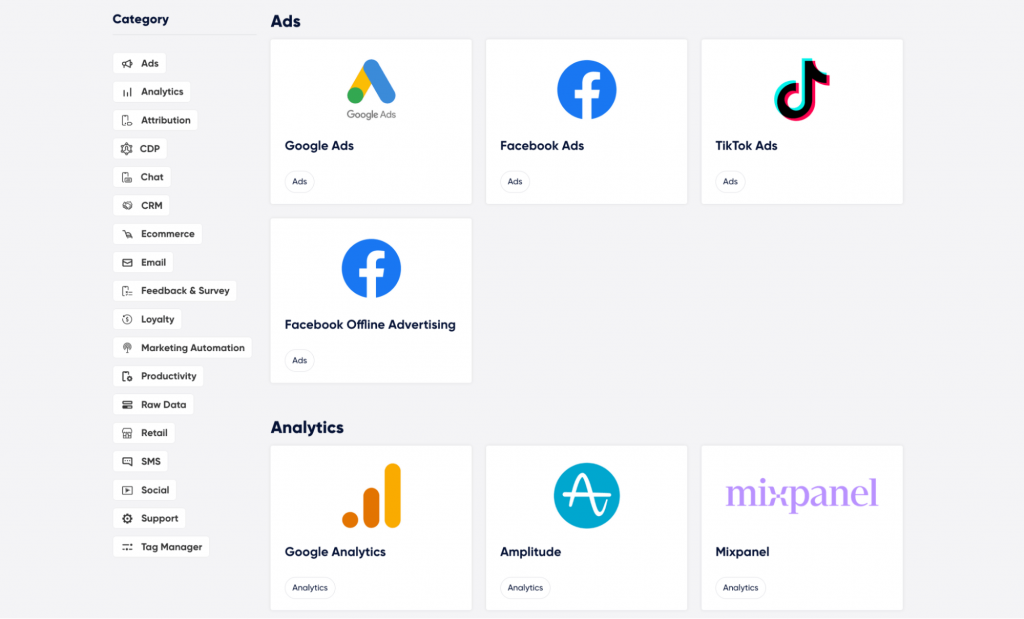
Plus, Insider’s flexible API lets you integrate and collect data from any other system — like a data management platform (DMP) or a legacy solution — into our CDP. In short, Insider aggregates data from any online or offline source, so all your customer information can be stored and ready for use in one place.
Once your data is unified, Insider creates detailed, 360-degree profiles of all your customers. These profiles contain everything you need to understand your customers’ behavior and create marketing campaigns that are tailored to them.
For example, the image below shows a unified customer profile in Insider containing:
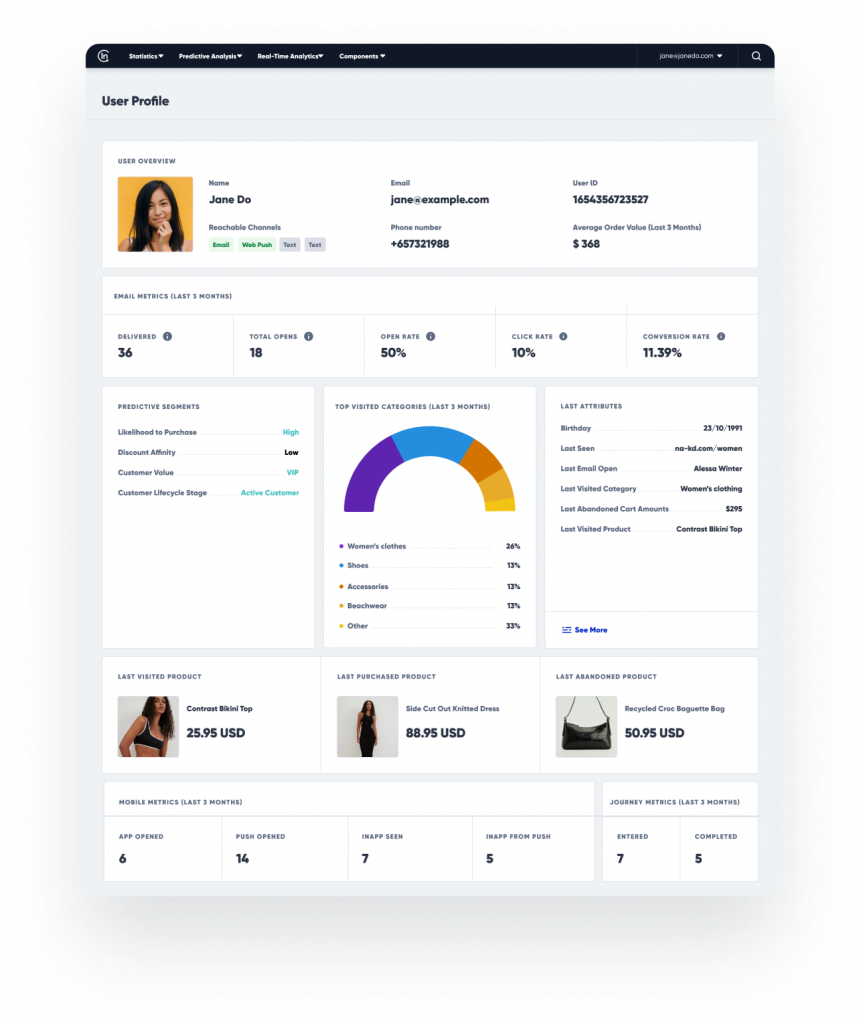
Insider also creates similar profiles for anonymous visitors browsing your website. These profiles don’t contain contact information, but they show everything visitors do on your site, including the categories, attributes, and products they show interest in.
Thanks to Insider’s web personalization suite, you can begin to tailor their on-site experience and send them tailored web push notifications with relevant products.
Insider can also help you utilize cookies personalization by triggering personalized onsite experiences based on contextual data (like device type or page URL) without needing any user information.
For example, you can:
This combination of techniques is extremely powerful for eCommerce stores because it enables them to:
Market segmentation allows you to home in on the right audiences for your campaigns and messages by grouping customers based on shared traits and behaviors. It’s a logical next step after data unification, which is why pretty much all CDPs have some customer segmentation capabilities.
Here’s how you can segment your audiences with Insider:
First, you can start with plenty of automatically generated and updated audiences of users who abandoned their carts, abandoned a product page, interacted with your brand on a specific channel, uninstalled your mobile app, and much more.
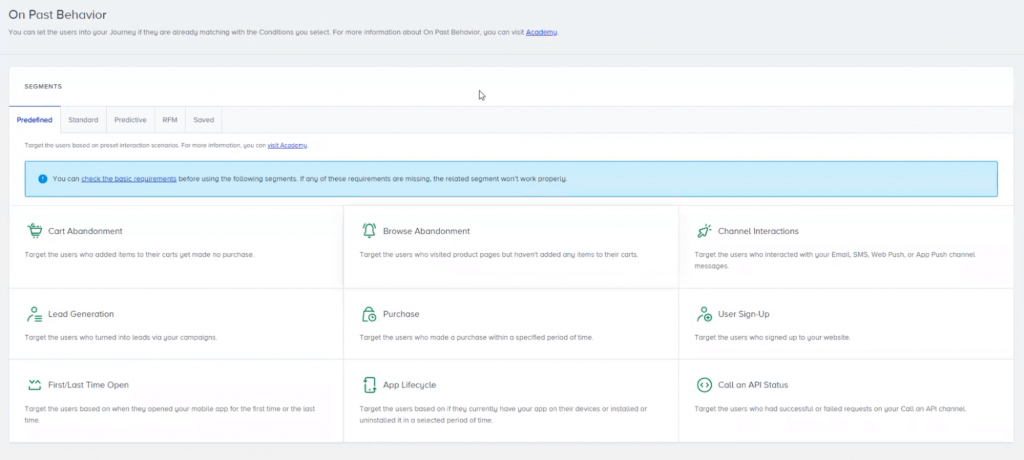
Then, you can get more granular with 120+ traits and characteristics, like locations, demographics, device types, CRM attributes, and more. Finally, you can use our AI-powered intent engine to target users based on their:
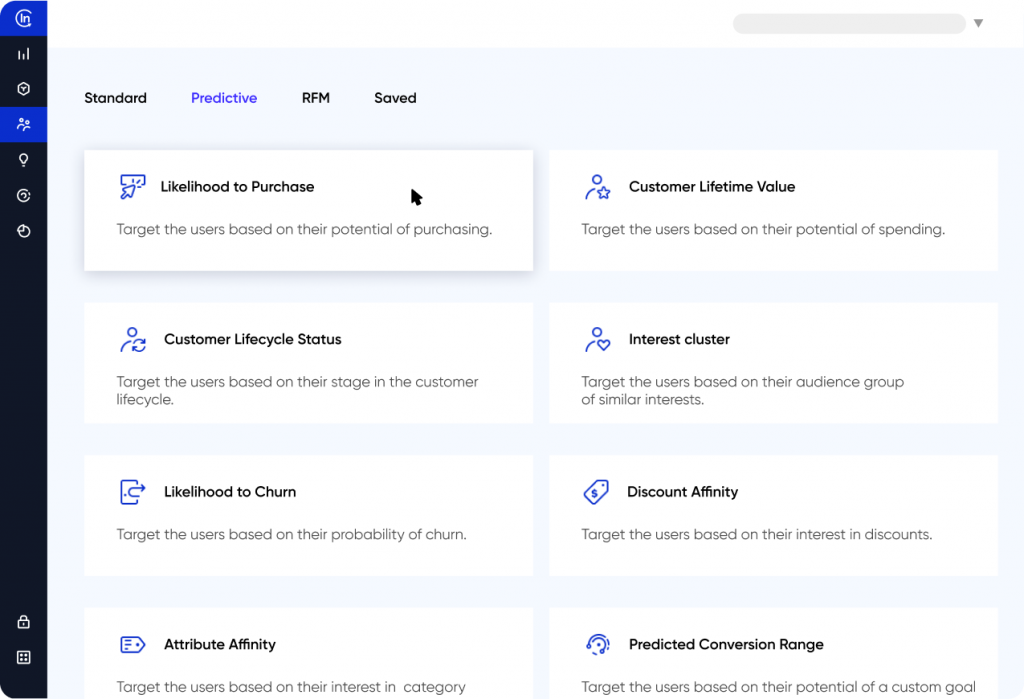
For example, you can use Insider’s segmentation capabilities to only show discounts to customers with a high discount affinity. That way, you won’t waste your discounts (and lower your profit margins) on shoppers who would’ve bought a product without a discount.
Pierre Cardin used a similar predictive segmentation strategy to improve their online ad targeting. Thanks to Insider’s broad segmentation features, the brand was able to:
Lastly, you can also use Insider’s Generative AI (called Sirius AI) suite to create audience segments in seconds using simple text prompts. Just tell Insider what your business goals are (e.g., reducing churn), and it will create a relevant segment for you.
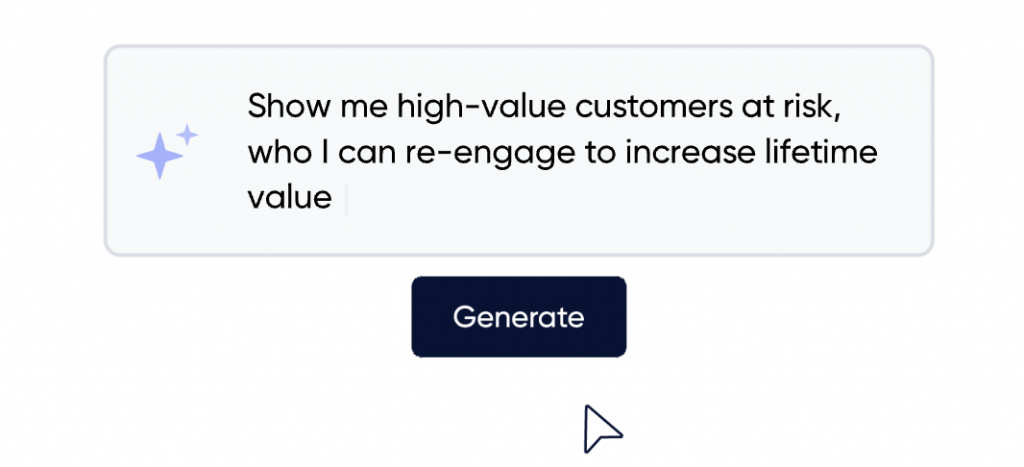
Most traditional CDPs are focused on everything we described so far, including data aggregation, identity resolution, and segmentation.
However, they don’t have the necessary tools to actually activate that data across channels and use it to drive revenue. Instead, they rely on integrations and passing their data to downstream platforms. This overcomplicates marketers’ workflows when trying to activate their data by building campaigns across different channels.
That’s why Insider brings together the most extensive set of personalization capabilities for websites and mobile apps, as well as for channels like email, SMS, WhatsApp, push notifications, and more. This means you can use our platform for unification, identity resolutions, and data activation.
Most eCommerce businesses spend a large amount of their marketing budget on getting people to their websites and mobile apps. The more of these visitors they’re able to convert, the better their marketing ROI, which is critical with today’s rising ad costs and unpredictable economic environment.
The best way to do this is by personalizing your website and mobile app. That’s why Insider lets you tailor every element — including content, messaging, and product recommendations — to each visitor’s preferences, interests, and needs.
For example, you can implement a personalization strategy in a few quick steps. First, you decide where you want the personalized product recommendations to appear — on all pages, just on product or article pages, on category pages, or on cart pages.
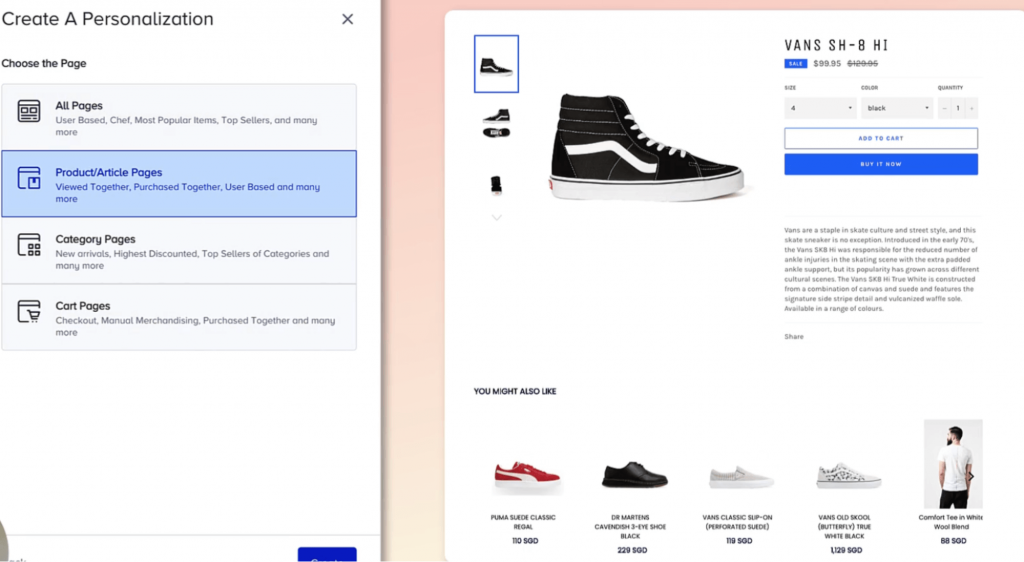
Then, you can choose from plenty of recommendations strategies, including:
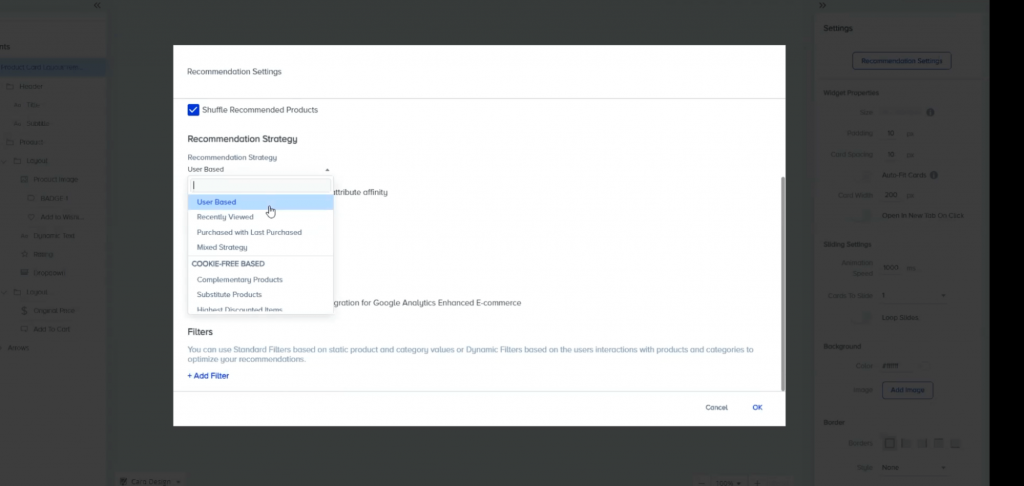
You can mix and match different types of strategies, while letting our algorithms detect and automatically apply the best-performing ones. And since this is all based on your unified data, you can be sure that the products shown to each customer will be as relevant as possible.
For example, Spotlight Retail Group used Insider’s CDP to unify their data, which enabled them to launch on-site and web push personalization much faster and without heavy reliance on their IT teams. They were able to slash their campaign launch times by 80% and achieve a 37x ROI in less than a year of working with Insider.When it comes to website personalization and engagement, Insider can also deliver personalized site search results (via EUREKA) and Instagram-like stories (via InStory). Both of these tools can help you drastically reduce bounce rates, keep your visitors engaged, and generate more revenue.
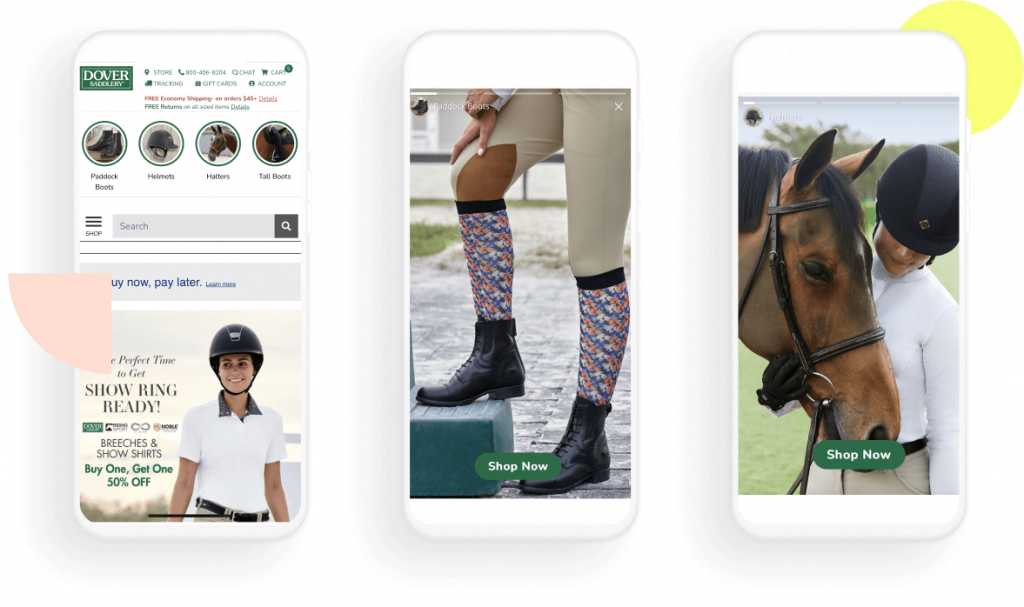
You can also use Insider to improve customer engagement, conversions, and revenue even more by expanding your personalization efforts across all other touchpoints, including:
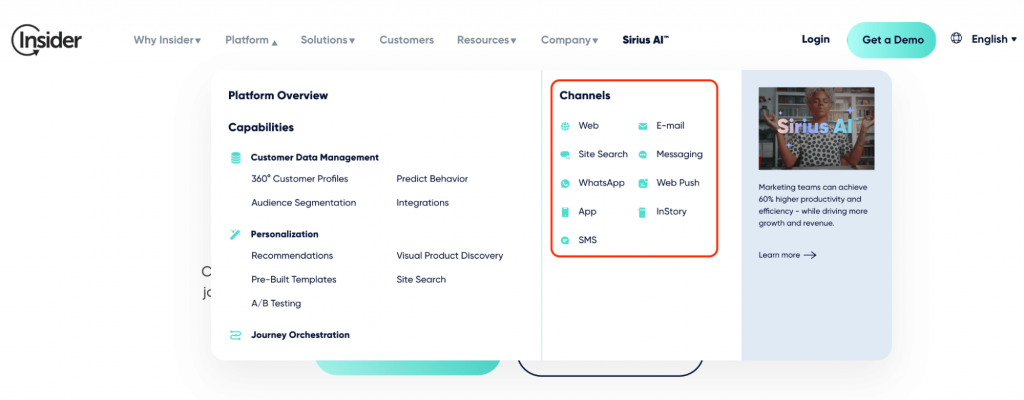
The broad channel support and extensive personalization capabilities enable you to consolidate your marketing stack, maximize your efforts, and make the most out of your marketing budget. This makes Insider one of the best and most versatile enterprise marketing platforms.
Using multiple channels to communicate with customers quickly gets overwhelming. That’s why Insider offers Architect — a simple and intuitive customer journey builder that helps you create consistent experiences across all touchpoints.
For example, eCommerce sports brand Slazenger used Architect to build personalized campaigns across their website, email, push notifications, and SMS. These campaigns resulted in a 700% increase in customer acquisition and a 49x ROI in just eight weeks.
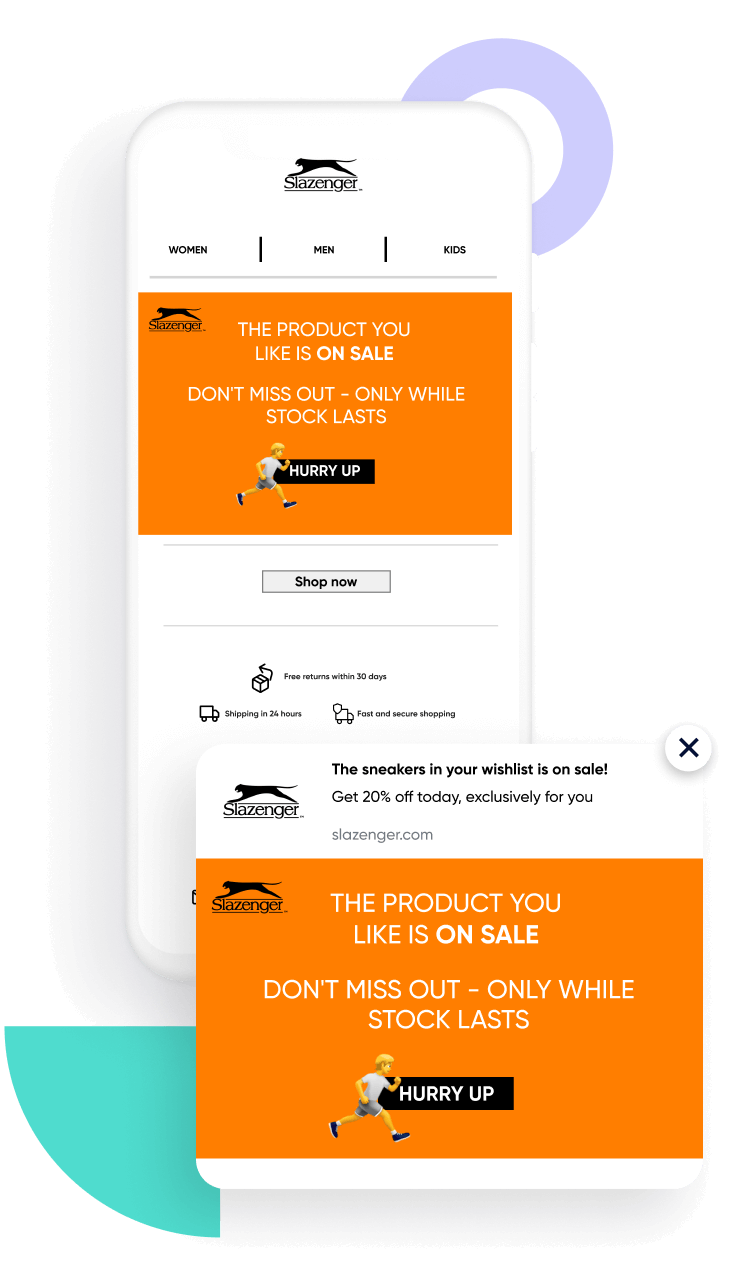
Here’s how Architect works:
You use a simple drag-and-drop editor to choose how each journey starts and unfolds. For example, you can start journeys based on events performed by users (e.g., successful purchases), attribute changes, price drops, restockings of popular items, and much more.
One option that’s very useful for some eCommerce stores is to build journeys based on dynamic dates. These journeys are great for celebrating customer milestones (like birthdays or anniversaries) or running replenishment campaigns for products that are bought on a regular schedule.
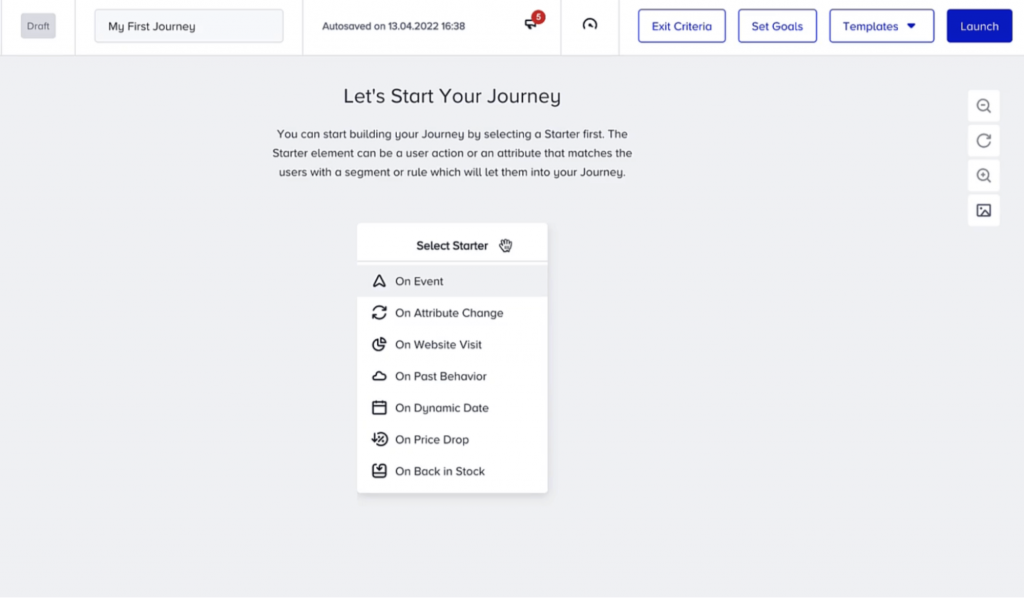
You’re also in full control of how each journey unfolds by choosing channels and wait times, setting various conditions, and much more. Check our guide to the top marketing automation platforms for a deeper dive into this topic.
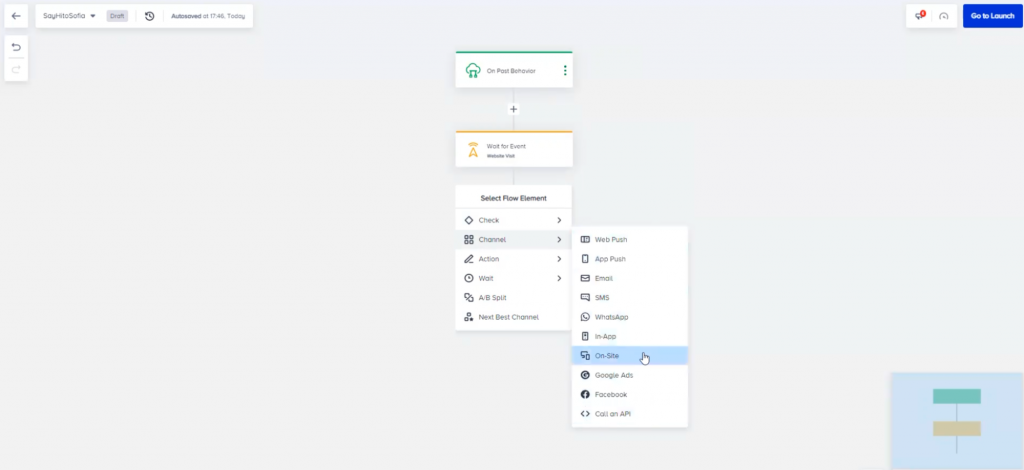
Insider also offers built-in A/B testing, so you can compare different aspects of each message and campaign. For example, you can experiment with subject lines, copy text, images, and even entire journey flows (e.g., email vs. SMS) to determine which ones produce more clicks, conversions, and revenue.
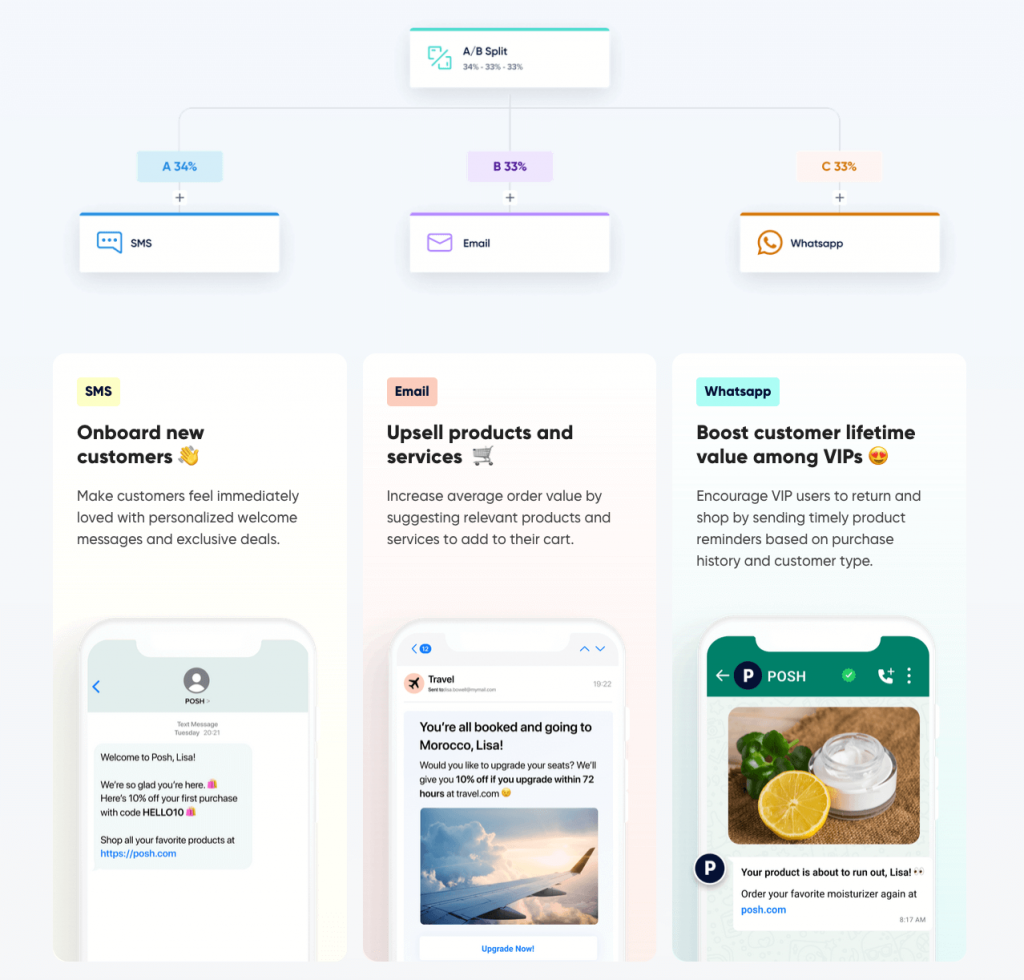
Additionally, Insider’s AI algorithms can do a lot of the heavy lifting when it comes to building and optimizing your journeys. For example, you can rely on them to ensure that every message you send is:
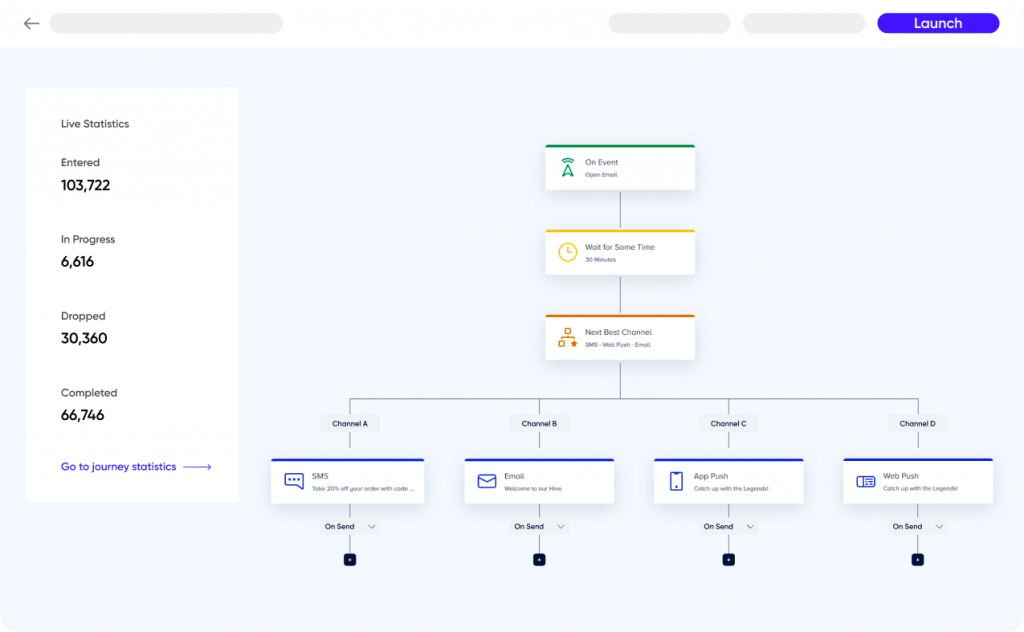
You also don’t have to start each journey from scratch as Insider comes with a vast library of proven templates. These cover tons of data activation use cases and channels, like generating leads, celebrating milestones, driving revenue, and more.
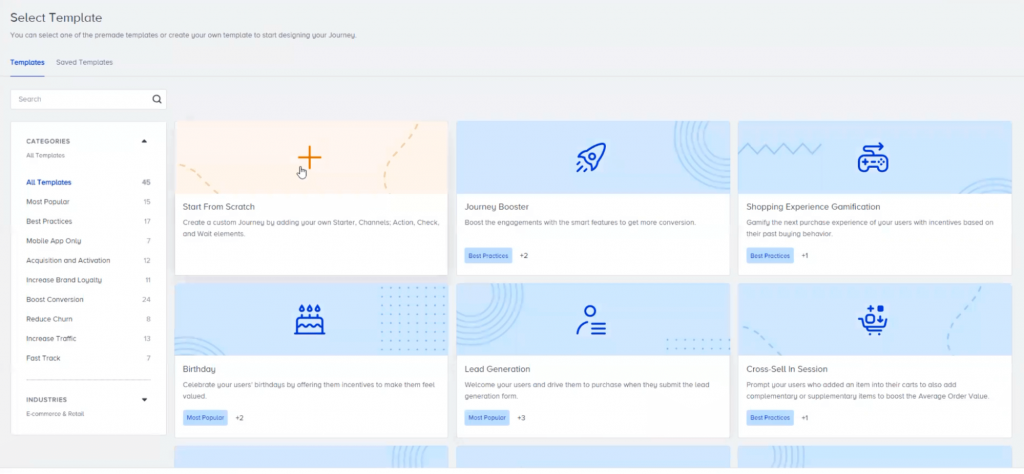
Our platform also offers advanced customer journey analytics to help you understand how users are navigating each journey and where they’re dropping off. In fact, Insider is ranked as the best customer journey analytics solution by users on G2.
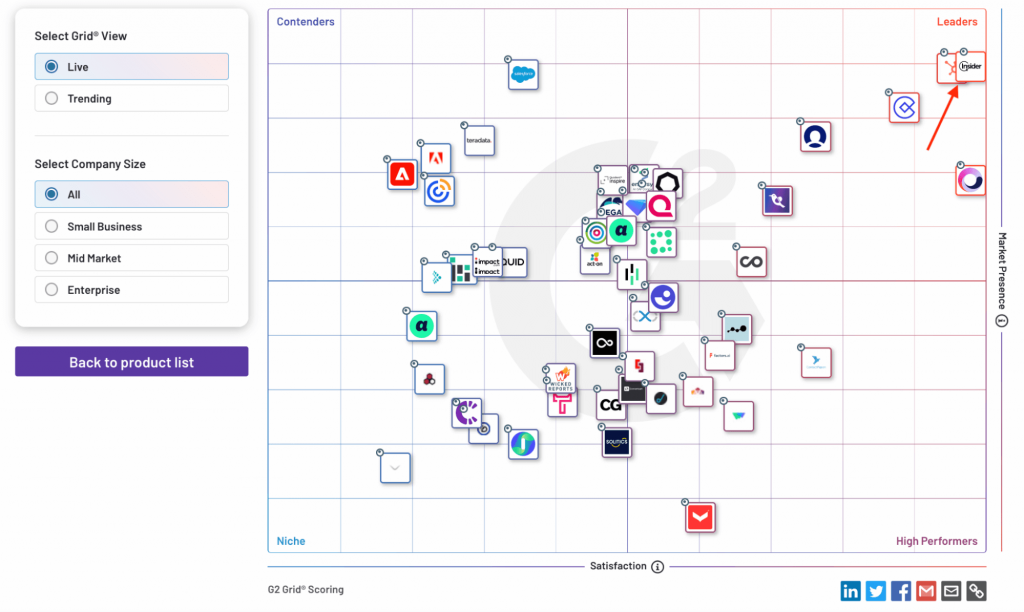
You have a dedicated Architect analytics panel that gives you a high-level overview of all journey stats and metrics. From here, you can drill down into individual journeys (and journey steps) if you need a more granular look into how a specific marketing strategy is performing.
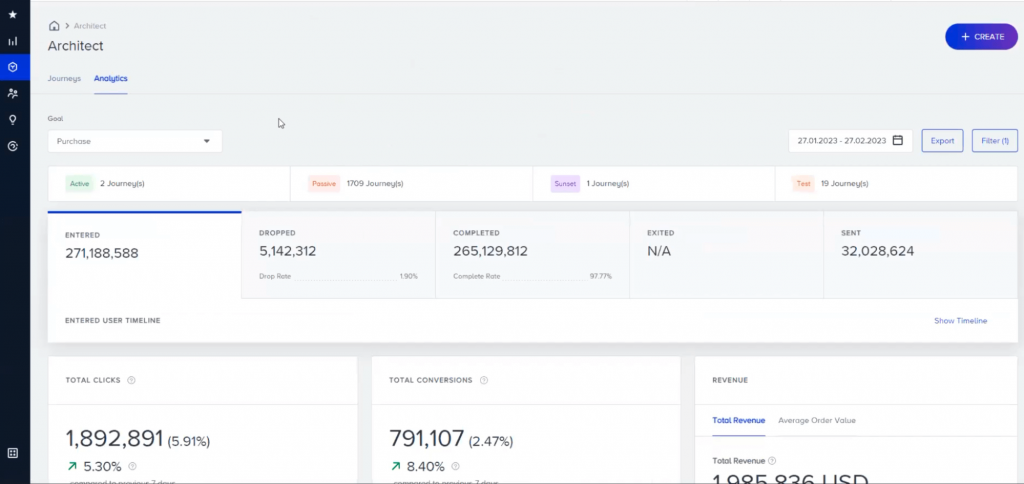
Lastly, you can drill down into specific channels to analyze their performance. For instance, you can easily see email open and click rates, web push click-through rates (CTR), SMS opt-ins and opt-outs over time, and much more.
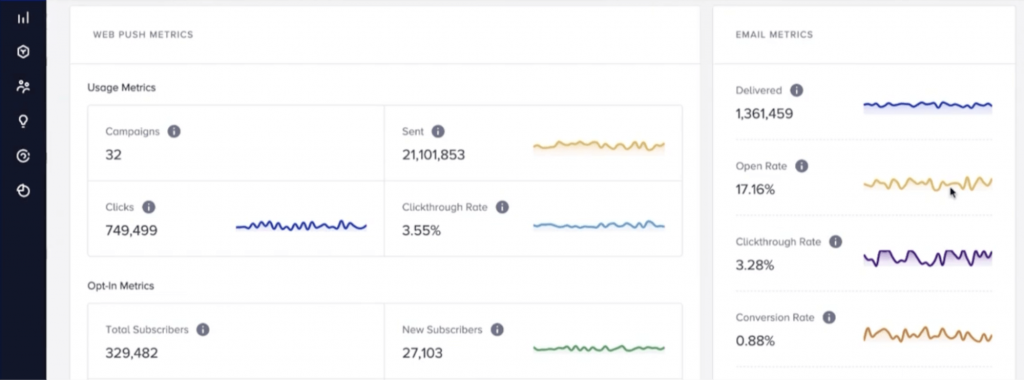
Insider is an ideal CDP and personalization platform for midsize and enterprise eCommerce companies. Marketing teams at 1200+ brands, like Adidas, Samsung, GAP, MAC Cosmetics, and Philips, use Insider to:
Click here to book a demo with our team and learn how Insider can help you reach your business goals.

Written by
Katie Morley
Katie is an award-winning content marketer with over eight years of experience in content strategy, development, and copywriting. As Global Content Director at Insider, she currently oversees content strategy across 26 regions. Fun fact: Katie read 64 books last year (for which she owes a long commute and two week-long holidays where she spent approximately six hours a day with her nose in a book).